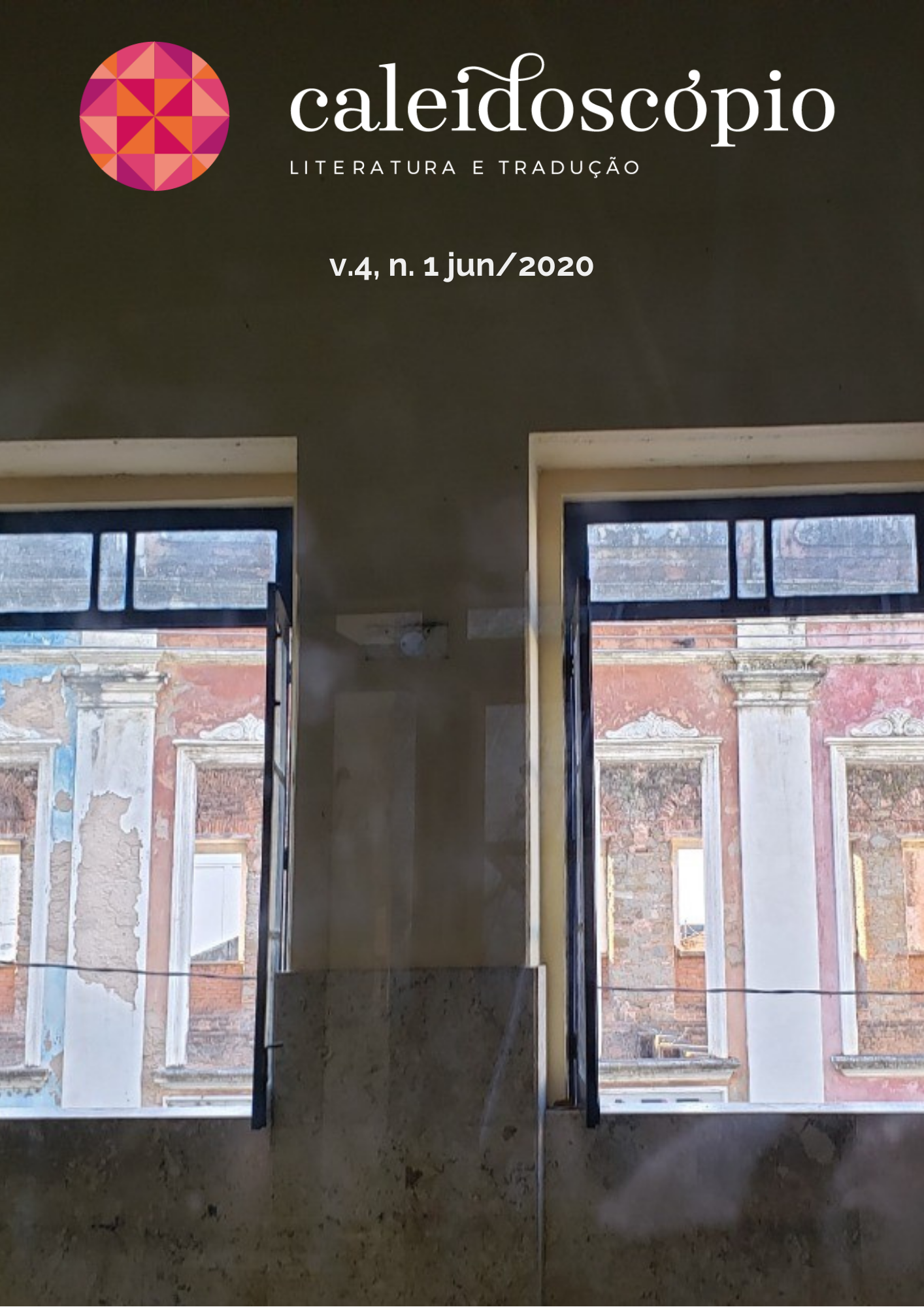O gênero meme produzido como narrativa multissemiótica a partir da triangulação entre diferentes gêneros do discurso
DOI:
https://doi.org/10.26512/caleidoscopio.v4i1.30110Abstract
ABSTRACT: This article presents a pilot project that it proposes a pedagogical strategy to develop a new way to think the reading after the technology. It has for goal to analysis the meaning of reading takes the production of a multisemiotic narrative from the reading of literate classic Moby Dick by Herman Melville. The public is students of the 1st year of the Integrated Technical High School course of the Federal Institute of the Southeast of Minas Gerais, Rio Pomba Campus. The study uses intersemiotic translate as teaching technical resource for formation of the reader. The use of image representation justified to produce the new language mediate by machine. The practice analyzed the literary book Moby Dyck by Herman Melville associated in diferents genders and form: abstract, images; meme. In the data analysis were used the concepts of Intersemiotic Translate according Plaza (2003); the concept of Discourse Gender according Bakhtin (1997 [1929]) and the concept of A Pedagogy of Multiliteracies according New London Group (1996). The conclusion demonstrates the language as the multi way to reading training, according Plaza (2003): “[…] we judge the translate as possible way to illuminate the practice.”[1]
KEYWORDS: Meme Gender, Multisemiotic Narrative, Discourse Gender, Iintersemiotic Translate, Formation of the Reader.
[1] Tradução para língua inglesa feita pela autora do trabalho.
Downloads
References
______________. Questões de literatura e de estética. A teoria do romance. São Paulo: Hucitec/UNESP.1988.
_________________. Os gêneros do discurso. In: Estética da criação verbal. Tradução: M.E.G.G. Pereira. São Paulo: Martins Fontes, 1997. p. 277-336.
BRASIL. Parâmetros Curriculares Nacionais: Língua Portuguesa: primeiro e segundo ciclos / Ministério da Educação. Secretaria da Educação Fundamental. 3. Ed. Brasília: A Secretaria, 1998.
CHIAPPINI, Ligia. Reinvenção da catedral: língua, literatura, comunicação: novas tecnologias e políticas de ensino. São Paulo: Cortez. 2005.
DIDI-HUBERMAN, Georges. A imagem sobrevivente: história da arte e tempo dos fantasmas segundo Aby Warburg. Trad. Vera Ribeiro. Rio de Janeiro: Contraponto. 2013. p. 11-94.
MACHADO,Arlindo.Máquina e imaginário: O desafio das Poéticas Tecnológicas. São Paulo: Editora da Universidade de São Paulo, 1993.
MELVILLE, Herman. Moby Dyck. Rio de Janeiro.Editora Nova Fronteira.4ª edição.2012.
PETIT, Michéle. Os jovens e a leitura: uma nova perspectiva. Trad. Celina Olga de Souza. São Paulo: Editora 34, 2ª Edição. 2009.
PLAZA. Julio. Tradução intersemiótica. São Paulo. Editora Perspectiva. 1ª edição- 2ª reimpressão. 2003.
RIBEIRO, A. L. Resumo acadêmico: uma tentativa de definição. Revista Científica da Faminas, Muriaé, v.2,n1,p.67-77, 2006.
ROJO, R. H. R (0rg) Escol@ conectada: os multiletramentos e as Tics. São Paulo: Parábola, 2013.
ROJO, Roxane Helena R; MOURA, Eduardo (orgs). Multiletramentos na escola. São Paulo: Parábola Editorial, 2012.
THE NEW LONDON GROUP (GNL),. A Pedagogy of Multiliteracies: Designing Social Futures. Harvard Educational Review. Vol.66. N. 1, 1996.
Downloads
Published
How to Cite
Issue
Section
License
Copyright (c) 2020 JOSIMAR RIBEIRO, Professor Doutor Vicente A. Parreiras

This work is licensed under a Creative Commons Attribution-NonCommercial-NoDerivatives 4.0 International License.
Copyright Notice
- Authors retain copyright and grant the journal right of first publication with the work simultaneously licensed under a Creative Commons Attribution License that allows others to share the work with an acknowledgement of the work's authorship and initial publication in this journal.
- Authors are able to enter into separate, additional contractual arrangements for the non-exclusive distribution of the journal's published version of the work (e.g., post it to an institutional repository or publish it in a book), with an acknowledgement of its initial publication in this journal.
- Authors are permitted and encouraged to post their work online (e.g., in institutional repositories or on their website) prior to and during the submission process, as it can lead to productive exchanges, as well as earlier and greater citation of published work (See The Effect of Open Access).




.png)
